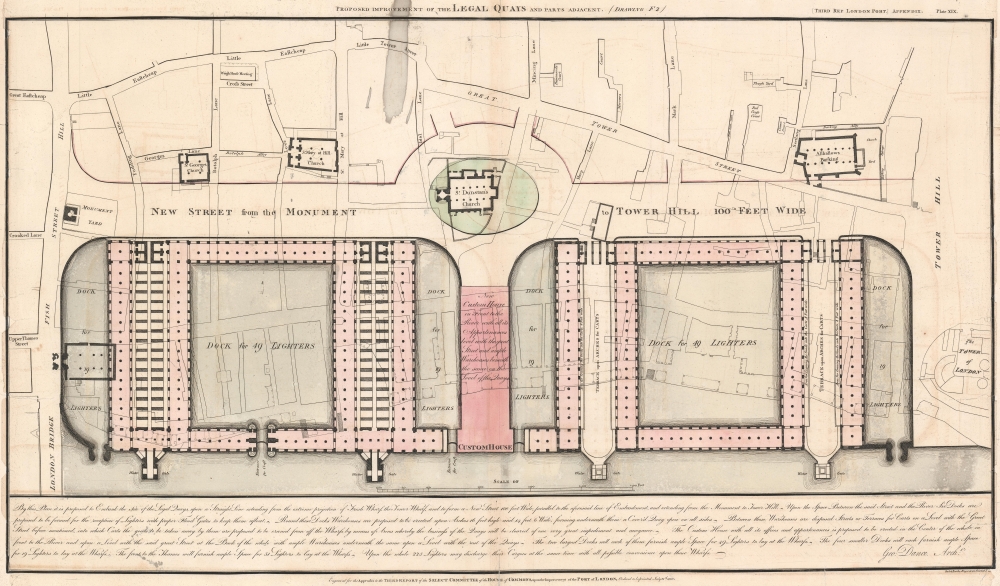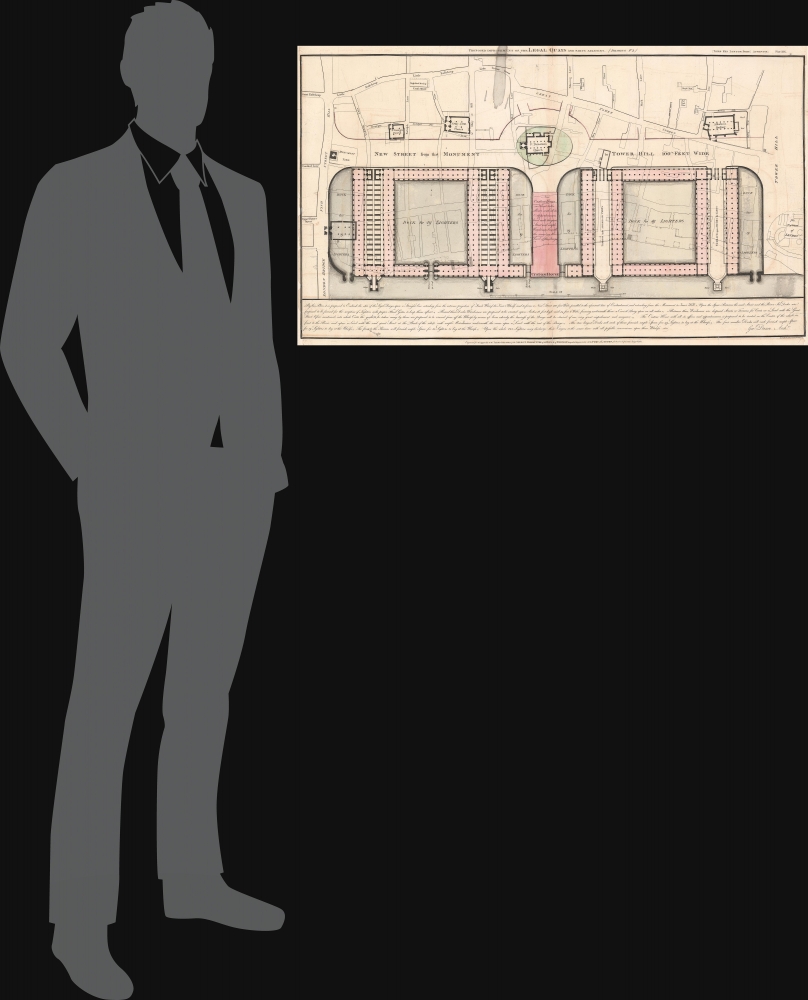Digital Image: 1800 George Dance Plan for the improvement of the Legal Quays, City of London
LondonLegalQuays-dance-1800_d
Title
1800 (dated) 22 x 37.5 in (55.88 x 95.25 cm) 1 : 900
Description
FOR THE ORIGINAL ANTIQUE MAP, WITH HISTORICAL ANALYSIS, CLICK HERE.
Digital Map Information
Geographicus maintains an archive of high-resolution rare map scans. We scan our maps at 300 DPI or higher, with newer images being 600 DPI, (either TIFF or JPEG, depending on when the scan was done) which is most cases in suitable for enlargement and printing.
Delivery
Once you purchase our digital scan service, you will receive a download link via email - usually within seconds. Digital orders are delivered as ZIP files, an industry standard file compression protocol that any computer should be able to unpack. Some of our files are very large, and can take some time to download. Most files are saved into your computer's 'Downloads' folder. All delivery is electronic. No physical product is shipped.
Credit and Scope of Use
You can use your digial image any way you want! Our digital images are unrestricted by copyright and can be used, modified, and published freely. The textual description that accompanies the original antique map is not included in the sale of digital images and remains protected by copyright. That said, we put significant care and effort into scanning and editing these maps, and we’d appreciate a credit when possible. Should you wish to credit us, please use the following credit line:
Courtesy of Geographicus Rare Antique Maps (https://www.geographicus.com).
How Large Can I Print?
In general, at 300 DPI, you should at least be able to double the size of the actual image, more so with our 600 DPI images. So, if the original was 10 x 12 inches, you can print at 20 x 24 inches, without quality loss. If your display requirements can accommodate some loss in image quality, you can make it even larger. That being said, no quality of scan will allow you to blow up at 10 x 12 inch map to wall size without significant quality loss. For more information, it is best consult a printer or reprographics specialist.
Refunds
If the high resolution image you ordered is unavailable, we will fully refund your purchase. Otherwise, digital images scans are a service, not a tangible product, and cannot be returned or refunded once the download link is used.
Cartographer
George Dance the Younger, (April 1, 1741 - January 14, 1825) was an English architect, surveyor and portraitist. Dance was born at his family home on Chiswell Street, London. He was the fifth son of a well-established architect and educated to follow in the family tradition. He studied at the St. Pauls School before departing on the Grand Tour and eventually spending six years studying architecture and draughtsmanship in Rome. He won several architecture awards in Italy and received his first commission there, to design two chimney pieces for Sir Robert Mainwaring. Dance returned to London and joined his father's architecture practice in 1765. In the same year his design was chosen to rebuild the All Hallows-on-the-Wall Church, Dance's first major project in London. He went on to complete numerous major constructions including the Royal College of Surgeons, Newgate Prison, St Luke's Hospital for Lunatics, and the Shakespeare Gallery in Pall Mall. Unfortunately most of these have been demolished. His most significant surviving work is the façade of London's Guildhall. In December of 1768 Dance was one of the Royal Academicians, founders of the Royal Academy. Dance largely retired in 1798 when he became a professor of architecture at the Royal Academy. Around this time he dedicated himself instead to portraiture to the extent that he did not deliver a single lecture at the academy. He was dismissed in 1805. Dance died at his home on 92 Grower Street, London, a site now marked with a plaque. His physical remains were interred at St. Paul's Cathedral. More by this mapmaker...




